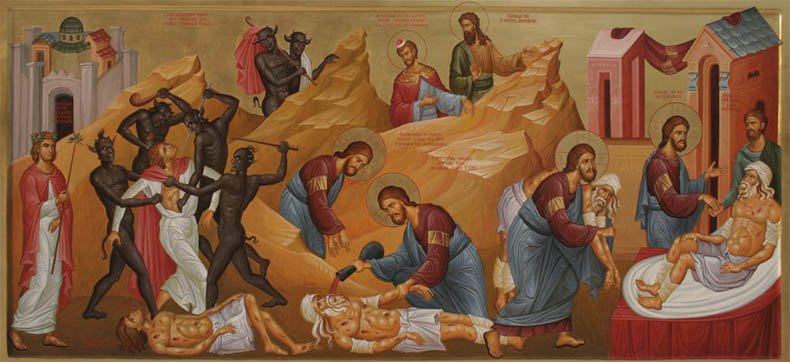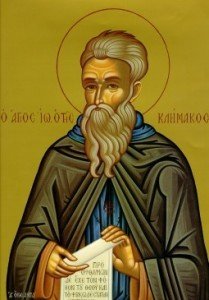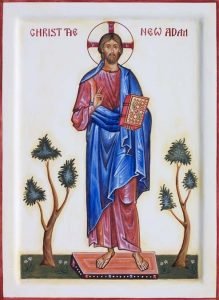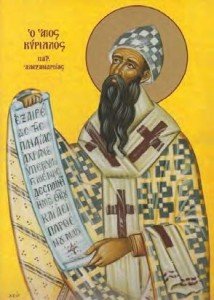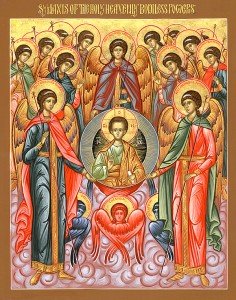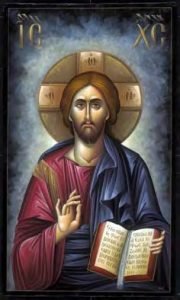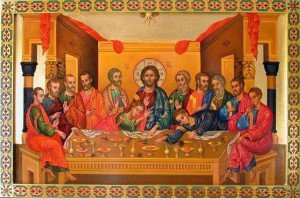Praise be Jesus Christ!
TIME TO REFLECT ON WHY WE ARE HERE IN THIS WORLD
With the commemoration of St. Philip on November 14th (Gregorian Calendar) or November 27th (Julian Calendar), we begin the customary fast or preparation for the Feast of the Nativity of the Birth of Our Lord and Savior, Jesus Christ. It coincides with the hectic season of pre-Christmas preparations, shopping for gifts for others, and invitations to participate in many social festive events. It truly becomes a challenge for us to withdraw ourselves from our earthly appetites, as we attempt to facilitate more time for prayer and meditation. When we become overwhelmed by such preparations, many of us step back and wonder whether all these things really add to our happiness and our feelings of contentment. We reflect on why we are here in this world.
Pope Francis, in the Apostolic Exhortation, “Joy of the Gospel”, says that you and I are “a mission on this earth”, and that is the reason why you and I are here in this world. We are called to live as missionaries who feel genuine happiness in seeking the good of others, in desiring their happiness. It is who we are. The Holy Father calls us to draw nearer to others and to seek their welfare. In turn, our hearts are opened wide to the Lord’s greatest and most beautiful gifts. “Whenever our eyes are opened to acknowledge the other, we grow in the light of faith and knowledge of God”.
The recent beatification of Saint Teresa of Calcutta reminds us of a life dedicated “to give until it hurts”. Mother Teresa gave of herself until it hurt, as she continued to give of her understanding, compassion, care and devotion. She revealed to us that every person is worthy of our giving. Pope Francis reminds us that “every human being is the object of God’s infinite tenderness, and He himself is present in their lives. Every person is immensely holy and deserves our love”. Why are you here in this world? Pope Francis tells us so beautifully, that “if I can help at least one person to have a better life, that already justifies the offering of my life. We achieve fulfillment when we break down walls and our heart is filled with faces and names!”
Herein lies our challenge during “Pylypivka” or Advent. Be still, calm yourself and hear the voice of Jesus in your life in prayer and meditation. Go about your daily life energized with the closeness of the Lord in your heart. Let Jesus be the source of your energy and that which you need for daily life. Choose to draw nearer to others seeking their betterment in small ways. Open your eyes to be become more aware of others and their challenges in life. Listen. Observe. Share of yourself in increased attentiveness to others. Share from your abundance. Pope Francis observes that “we do not live better when we flee, hide, refuse to share, stop giving and lock ourselves up in our own comforts. Such a life is nothing less than slow suicide”.
You will come to know that “it is more blessed to give than to receive” (Acts 20:35). You will be able to “give until it hurts” because it will not hurt. Jesus will not ask more of you than you can handle. You will do it with His joy and peace overtaking you. And, you will have come to understand why you are here in this world as you prepare to celebrate the Feast of the Nativity of Our Lord and Savior, Jesus Christ!
God bless you in ways only He can as you journey through “Pylypivka” or Advent in anticipation of the birth of Jesus in the cave at Bethlehem.
+Stefan Soroka (author)
Archbishop of Philadelphia for Ukrainians
Metropolitan of Ukrainian Catholics in the United States
+Paul Chomnycky, OSBM
Eparch of Stamford
+ Bohdan Danylo
Eparch of St. Josaphat in Parma
+John Bura
Auxiliary Bishop of Philadelphia
November, 2016
ПАСТИРСЬКЕ ПОСЛАННЯ ІЄРАРХІВ УКРАЇНСЬКОЇ КАТОЛИЦЬКОЇ ЦЕРКВИ США НА ПИЛИПІВКУ ВСЕЧЕСНІШОМУ ДУХОВЕНСТВУ, ПРЕПОДОБНОМУ МОНАШЕСТВУ, СЕМІНАРИСТАМ, НАШИМ ДОРОГИМ ВІРНИМ УКРАЇНСЬКОЇ КАТОЛИЦЬКОЇ ЦЕРКВИ В СПОЛУЧЕНИХ ШТАТАХ АМЕРИКИ
Слава Ісусу Христу!
ЧАС ЗАДУМАТИСЯ НАД ТИМ, ДЛЯ ЧОГО МИ ЖИВЕМО В ЦЬОМУ СВІТІ
Від дня святого Пилипа, який припадає на 14-те листопада (за Григоріянським календарем), чи 27–ме листопада (за Юліянським), розпочинається традиційний піст для приготування до святкування Різдва, чи народження нашого Господа і Спаса Ісуса Христа. Він збігається з гарячковою порою передріздвяних приготувань, гонитвою за подарунками, запрошень до участі в різних святочних заходах. Цей час дійсно стає викликом – як відмовитися від наших земних пристрастей і уділити більше часу на молитву та роздуми. Багато з нас, переобтяжені цими приготуваннями, врешті відсторонюються від усього цього і запитують себе, чи справді усі ці речі приносять нам радість і втіху. Ми замислюємося над тим, для чого ми живемо в цьому світі.
Папа Франциск в Апостольському поученні «Радість Євангелія», говорить, що ви і я «маєте мету життя на землі», і що це є причиною, чому ви і я живемо на землі. Ви і я покликані жити як місіонери, які переживають щиру радість від прагнення добра для інших, від бажання їм радості. Такими ми є. Святіший Отець закликає нас зближуватися з іншими і діяти їм на благо. У відповідь наші серця широко відкриються для найбільших і найчарівніших Господніх дарів. «Кожного разу як наші очі висловлюють вдячність іншим, ми зростаємо в вірі й пізнанні Бога».
Нещодавня беатифікація святої Терези з Калькути пригадує нам про життєву посвяту «давати, аж до болю». Мати Тереза віддавалася аж до болю, але продовжувала уділяти своє зрозуміння, співчуття, турботу і відданість. Вона засвідчила нам, що кожна особа достойна нашої жертовності. Папа Франциск нагадує нам, що «кожна людська істота є об’єктом Божої безмежної доброти, і Він сам присутній в їхньому житті. Кожна особа є безмірно свята і гідна нашої любові». Заради чого ви живете в цьому світі? Папа Франциск так гарно говорить про це: «якщо я зможу помогти принаймні одній людині знайти краще життя, це вже виправдає дароване мені життя. Ми здійснюємо свій обов’язок, коли руйнуємо стіни й наші серця наповнюються обличчями й іменами!»
У цьому полягає наш виклик в часі Пилипівки. Зупиніться, заспокойтеся і прислухайтеся до голосу Ісуса в вашому часі молитви і роздумувань. Живіть повсякденним життям натхненні близькістю з Господом у вашому серці. Нехай Ісус стане джерелом вашої енергії і того, що ви потребуєте в щоденному житті. Оберіть зближення з іншими, шукаючи ті дрібні речі, які скрасять їхнє життя. Відкрийте очі, щоб побачити інших і їхні життєві виклики. Слухайте. Спостерігайте. Уділяйте свою підвищену увагу іншим. Діліться своїми достатками. Папа Франциск зауважує, що «ми не живемо краще, якщо утікаємо, ховаємося чи відмовляємося ділитися, перестаємо давати і замикаємося в нашому комфорті. Таке життя є нічим іншим як повільним самогубством».
Ви дізнаєтеся, що «більше щастя – давати, ніж брати» (Ді. 20, 35). Ви будете здатні «давати аж до болю», бо це не буде боліти. Ісус не попросить від вас більшого, ніж ви зможете нести. Ви будете робити це з радістю й миром, які оволодіють вами. І ви, приготовляючись до святкування Різдва нашого Господа й Спаса Ісуса Христа, зрозумієте, заради чого ви живете в цьому світі!
Нехай Бог благословить вас лише Йому відомими шляхами у вашій подорожі Пилипівкою в очікуванні святкування народження Ісуса в стаєнці в Вифлеємі.
+Високопреосвященний Стефан Сорока (автор)
Митрополит Української Католицької Церкви у США
Архиєпископ Філадельфійський для Укpаїнців
+Преосвященний Павло Хомницький, ЧСВВ
Єпископ Стемфордської єпархії
+Преосвященний Богдан Данило
Єпископ Пармської єпархії святого Йосафата
+Преосвященний Іван Бура
Єпископ-Помічник Філадельфійський
![]() To acquire the mind of Christ, we must begin to think in the following way. We must say that we truly believe that in the Church, the Kingdom is present and revealed, but yet to be consummated. We must sense that right now we are living a new life in Christ and respond to his call: Come, all things have been prepared for you. Our task is to do what we can in this present moment to transform our thinking and then leave the rest to God.
To acquire the mind of Christ, we must begin to think in the following way. We must say that we truly believe that in the Church, the Kingdom is present and revealed, but yet to be consummated. We must sense that right now we are living a new life in Christ and respond to his call: Come, all things have been prepared for you. Our task is to do what we can in this present moment to transform our thinking and then leave the rest to God.
